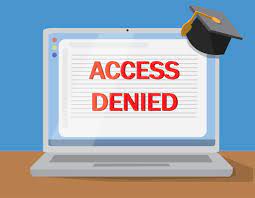 July 2024
July 2024
For those who understand how to utilize it properly, e-mail has become the most powerful non-media form of communication of our lifetime. Businesses, organizations, groups and individuals that make effective use of it get results.

For condominium communities, this means communicating information to residents both individually and as a group.
Toronto Condo News relies on e-mail technology not only for magazine distribution but to stay in touch with its advertisers and contributors. Its publisher has been at the forefront of e-mail communication since the 1990s and has agreed to share his insights for readers of Toronto Condo News.
A Brief History of E-mail
 Personal computing devices as we have come to know them began in the 1980s. These were, initially, stand-alone devices primarily for use in business. Early software applications were developed for word processing and spreadsheets.
Personal computing devices as we have come to know them began in the 1980s. These were, initially, stand-alone devices primarily for use in business. Early software applications were developed for word processing and spreadsheets.
The graphical display now used on all personal computing devices first appeared in 1992. This was the beginning of mass adoption of computers by consumers. Early efforts to connect these personal computing devices also began in the 1990s. E-mail was one of many applications that began to develop. It started with the first online services, America Online and Compuserve, available to consumers. The internet was in its infancy and few individuals had access to a personal computing device, let alone any access to the internet. Among those utilizing e-mail, it was necessary to purchase specialized software for accessing, preparing and sending messages.
One of the earliest business uses for e-mail, other than general communications, was by Canadian Corporate News, a major newswire service at the time. E-mail became a way to efficiently circumvent traditional media by delivering business news directly to those interested in receiving it. There was no longer a dependence on media to selectively report business news. Investors receiving this information could improve their investment returns over those waiting to obtain information from television, newspaper or magazines.
Three things started changing by the early 2000s. Computers dropped in price and were purchased by more consumers. The internet became more advanced making it easier for computers to communicate with each other. Finally, the browser became easier to use and more powerful. People and businesses began experimenting with what could be done using the computer and internet. One of the earliest combined uses of the internet and e-mail was to track shipped packages. UPS and Federal Express assigned tracking numbers to each shipped package. Packages were scanned during shipment until reaching their final destination. This allowed shipments to be tracked for those in possession of a tracking number frequently sent to them via e-mail.
As internet applications developed, e-mail became a “free” service. Anyone with internet access could obtain an e-mail account and software allowing them to communicate with others. This worked and continues to work well for individuals. It has proven inadequate for those requiring more professional communications reaching larger numbers of people while requiring more sophisticated systems for building distribution lists, searching and record keeping for electronic communications.
Internet access to information of all types, including e-mail, has become so pervasive it has disrupted, changed or destroyed many businesses, industries and communication methods faster than most thought possible.
Toronto Condo News’ immense success is partially due to its ability to communicate with readers, condo vendors and its advertisers professionally and effectively through e-mail. It is not uncommon for the company to send more than 10,000 messages in a single day with targeted and relevant information reaching those requesting it.
Condominium Corporation E-mail Communications Today
With both personal electronic devices and private e-mail accounts so common, the vast majority of condo residents in a community can receive and likely prefer e-mail communication. This creates efficiencies and cost savings for a condominium corporation that learns how to make effective use of this medium.
 Anyone can easily send an e-mail. It is much harder to put out a communication that is coherent, makes sense and motivates a recipient to take action. For businesses, taking action may mean getting the recipient to make a purchase. For a condominium corporation, taking action is more likely to mean getting residents acting in an agreeable manner, attending a meeting or social event, or curtailing certain undesirable actions. This requires writing and formatting skills to make messaging easy to read and understand. Too many words bunched together using a small text size tends not to be read let alone understood. Messages require concise wording, headings, proper formatting and use of colour if they are to have their desired effect.
Anyone can easily send an e-mail. It is much harder to put out a communication that is coherent, makes sense and motivates a recipient to take action. For businesses, taking action may mean getting the recipient to make a purchase. For a condominium corporation, taking action is more likely to mean getting residents acting in an agreeable manner, attending a meeting or social event, or curtailing certain undesirable actions. This requires writing and formatting skills to make messaging easy to read and understand. Too many words bunched together using a small text size tends not to be read let alone understood. Messages require concise wording, headings, proper formatting and use of colour if they are to have their desired effect.
While the cost of a Gmail and other e-mail services is ideal (free), they are inadequate for the needs and requirements of a condominium community. They are practical for communicating with vendors, service providers and others that do not own or reside in the community.
Condominium management has business and governance requirements requiring that communications among residents, owners, directors and management not only be sent and received but also retained and relied on. Finding a specific communication from five years ago, out of the many thousands sent and received each and every year, is next to impossible using free e-mail services if it even continues to exist when needed. A condo board wanting to know how many noise complaints originate from a specific unit over the past three years may not be possible, or practical, without a proper system in place to manage what can easily be tens of thousands of communications. Free e-mail accounts are not designed to accommodate these requirements.
Condominium corporation e-mail accounts should be under the control of the corporation. Any free e-mail account provided by a management company or condominium manager is even worse than relying on one established by the corporation. Not only is it a poor tool for the task but whatever records retained in the account are not owned or accessible to the corporation. At such time as a new manager or management company is retained, these records may not be transferrable to the corporation.
Condominium communities are fortunate to have available to them many effective and economical solutions to not only e-mail communication but owner and resident records, and records of the corporation. Condo Management Software offers a great many benefits including connecting all communications to specific owners and tenants for easy access even years into the future.
 E-mail is perhaps the greatest advancement in communication of our lifetime. Making the most of this powerful medium benefits everyone in a community.
E-mail is perhaps the greatest advancement in communication of our lifetime. Making the most of this powerful medium benefits everyone in a community.







